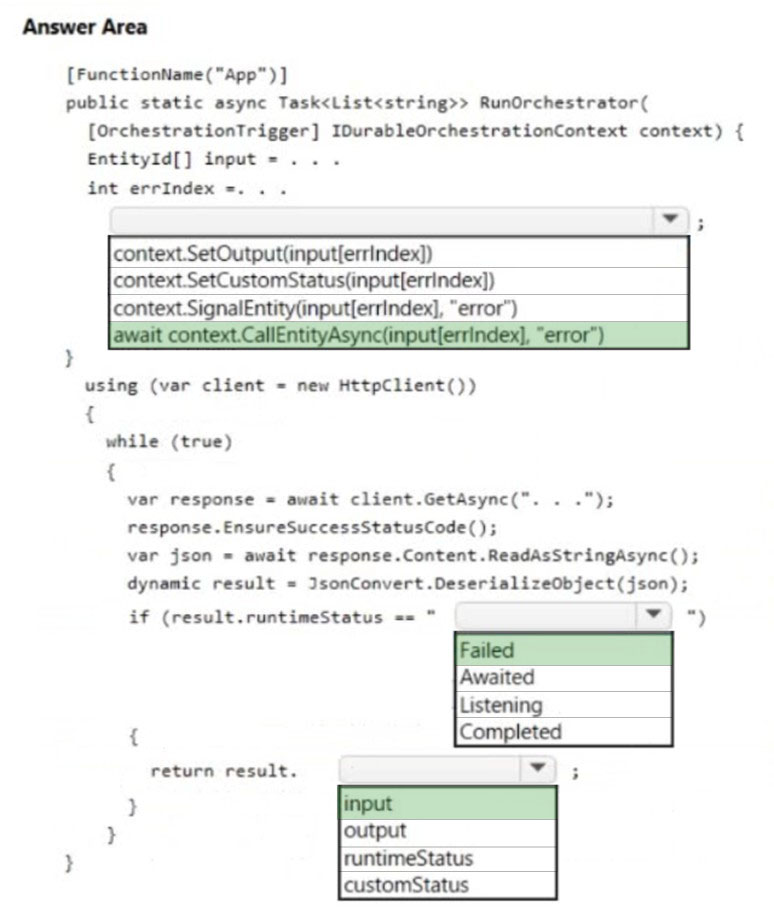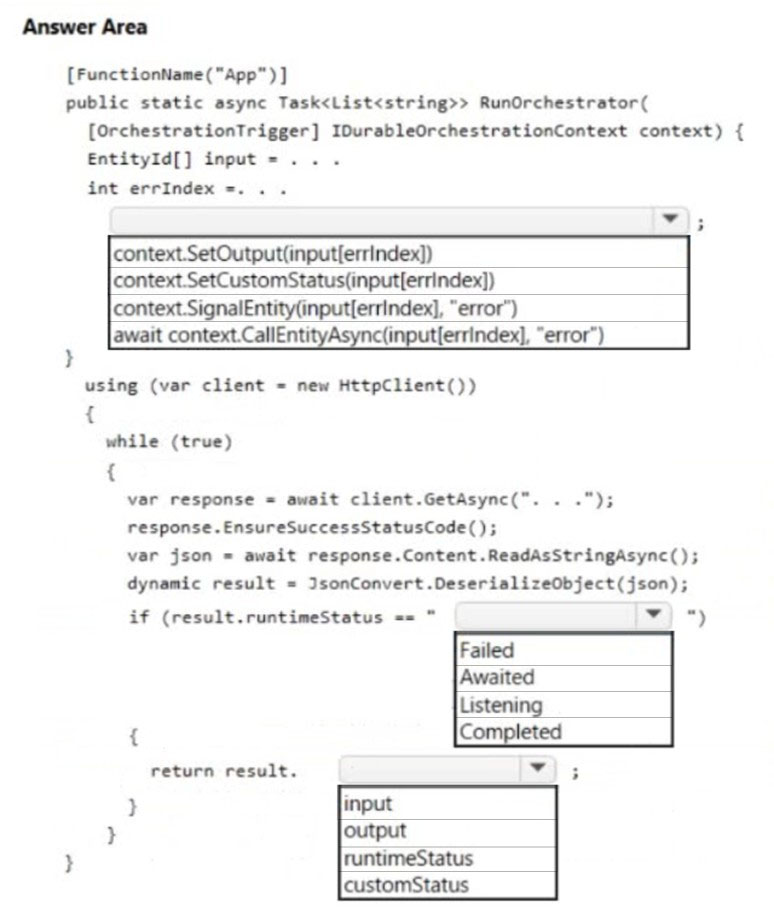
Box 1: await context.CallEntityAsync(input[errindex],"error")
Orchestration signals and calls an entity
Orchestrator functions can access entities by using APIs on the orchestration trigger binding.
Example:
[FunctionName("CounterOrchestration")]
public static async Task Run(
[OrchestrationTrigger] IDurableOrchestrationContext context)
{
var entityId = new EntityId(nameof(Counter), "myCounter");
// Two-way call to the entity which returns a value - awaits the response int currentValue = await context.CallEntityAsync(entityId, "Get");
Box 2: Failed -
During processing a single instance of invalid input does not cause the function to fail.
Note: RuntimeStatus: One of the following values:
Failed: The instance failed with an error.
Completed: The instance has completed normally.
Terminated: The instance was stopped abruptly.
Pending: The instance has been scheduled but has not yet started running.
Running: The instance has started running.
ContinuedAsNew: The instance has restarted itself with a new history. This state is a transient state.
Box 3: Input -
Invalid input must be available to the monitoring application.
Reference:
https://docs.microsoft.com/en-us/azure/azure-functions/durable/durable-functions-entities https://docs.microsoft.com/en-us/azure/azure-functions/durable/durable-functions-instance-management

